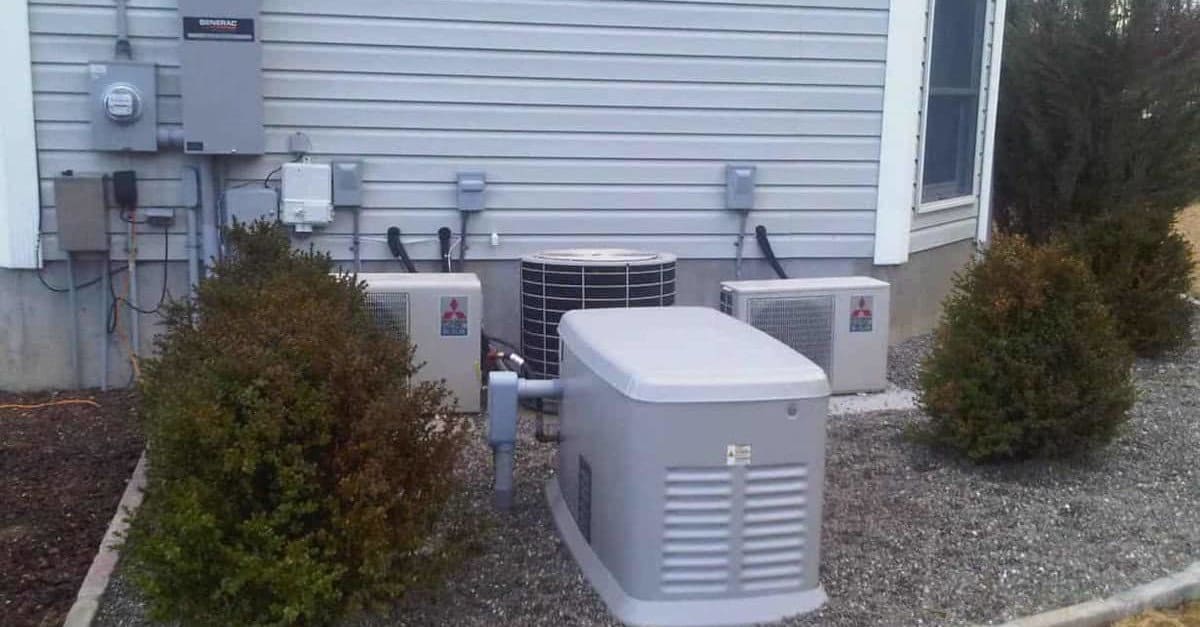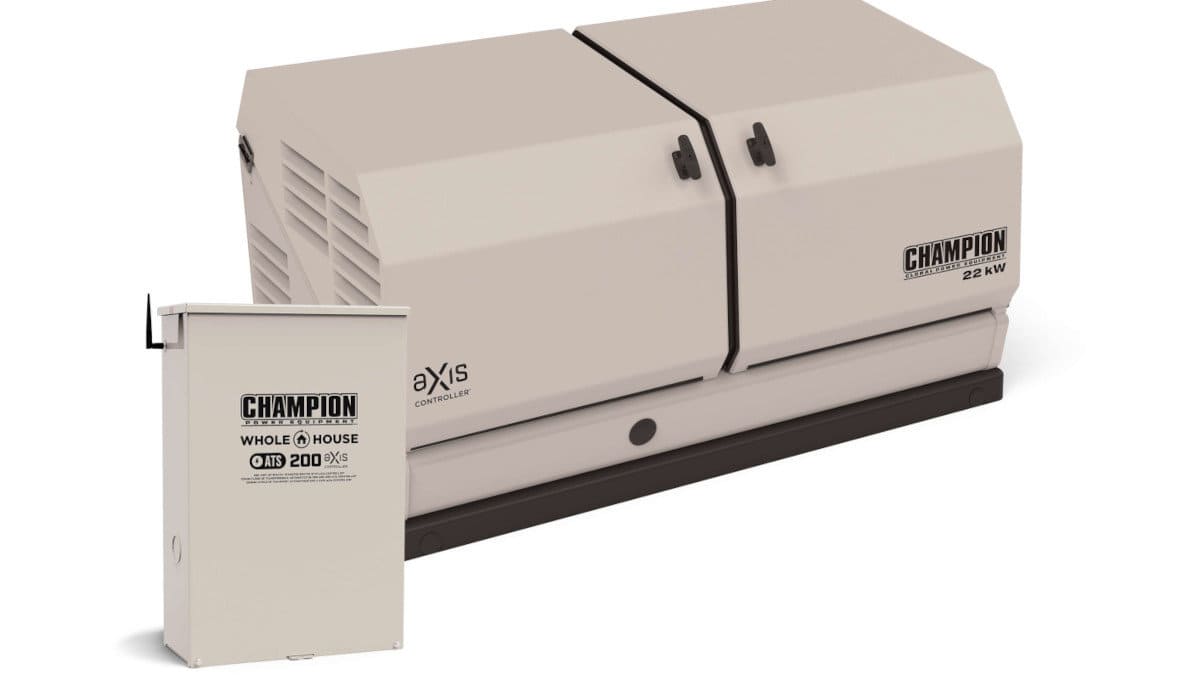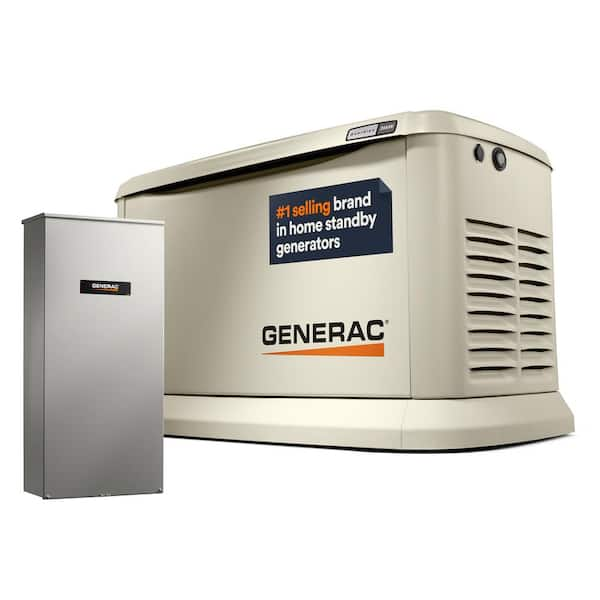For a 200 amp service, a whole house generator typically needs to be between 20kW and 25kW. This size ensures adequate power supply during outages.
Choosing the right size whole house generator is crucial for seamless power supply. A generator that’s too small may not handle the load, while an oversized generator is inefficient and costly. For homes with a 200 amp service, a generator in the 20kW to 25kW range usually meets energy needs.
This power rating can support essential appliances, heating, cooling, and lighting. Assessing your home’s specific power requirements helps ensure optimal generator performance. Consulting with a professional can also provide tailored recommendations. An appropriately sized generator offers peace of mind during power outages, keeping your household running smoothly.
Understanding Power Needs
Choosing the right size whole house generator is crucial. It ensures your home functions smoothly during power outages. Understanding power needs helps in making an informed decision.
Determining Your Home’s Power Usage
First, list all the appliances and systems in your home. Note their power requirements. Most appliances have a label indicating their power consumption.
| Appliance/System | Power (Watts) |
|---|---|
| Refrigerator | 800 |
| Air Conditioner | 2000 |
| Heater | 1500 |
| Lights | 500 |
| Television | 400 |
Add up the watts to get your total power usage. This helps in choosing the right generator size.
Peak Vs. Continuous Power
Generators have two power ratings: peak power and continuous power. Peak power is the maximum power a generator can handle for short bursts. Continuous power is the power a generator can handle for long periods.
- Peak Power: Short-term power for starting appliances.
- Continuous Power: Long-term power for running appliances.
Calculate both to ensure your generator can handle both scenarios. This ensures smooth operation of all home systems.

Credit: blog.norwall.com
Generator Sizing Basics
Understanding the right size for your whole house generator is crucial. It ensures your home remains powered during outages. For a 200 amp service, the generator size must meet your home’s electrical needs.
How Generator Size Is Measured
Generator size is measured in kilowatts (kW). This indicates the generator’s power output.
- 1 kilowatt equals 1,000 watts.
- A 10 kW generator can provide 10,000 watts of power.
Generators are rated based on their continuous and peak power output. Continuous output is the power a generator can supply consistently. Peak output is the maximum power for short bursts.
Factors Influencing Generator Size
Several factors influence the generator size needed for a 200 amp service. Here are the most critical:
- Home Size: Larger homes typically need more power. More rooms and appliances increase demand.
- Appliance Load: High-power appliances like HVAC systems and water heaters need more power. List all essential appliances to calculate total power needs.
- Peak Power Usage: Consider times of high usage. This includes running multiple appliances simultaneously.
- Future Expansion: Plan for future electrical additions. This includes new appliances or home expansions.
A detailed power audit helps determine the exact generator size. Consult a professional for an accurate assessment.
Types Of Generators
Choosing the right generator is important for a 200 amp service. There are different types of generators to consider. Each type has its own benefits and features.
Portable Vs. Standby Generators
Portable generators are easy to move. They are good for short-term power needs. They can power small appliances and tools. But, they need manual setup and fuel refilling.
Standby generators are fixed in place. They turn on automatically during a power outage. They can power the whole house. They are more expensive but offer convenience and reliability.
Fuel Types And Efficiency
Generators use different fuel types. Each fuel type affects efficiency and cost.
- Gasoline: Easy to find but needs frequent refilling. It is less efficient for long-term use.
- Diesel: More efficient and lasts longer. It is better for heavy-duty use.
- Natural Gas: Connects to your home’s gas line. It is convenient but might not be available everywhere.
- Propane: Stored in tanks. It is clean and has a long shelf life.
Choose a fuel type based on availability and your power needs. Efficiency and cost are important factors.
Sizing Guide For 200 Amp Service
Choosing the right whole house generator is crucial for uninterrupted power. A 200 amp service requires careful calculation to ensure all appliances run smoothly. Below is a detailed guide to help you determine the best generator size for your needs.
Calculating Total Power Requirements
To find the right generator size, first calculate your total power needs. List all the appliances and devices you plan to power. Check their wattage ratings, usually listed on the back or in the manual.
Use the following formula to calculate the total power:
Total Power (Watts) = Sum of all Appliance Wattages
Let’s consider some common appliances:
| Appliance | Wattage |
|---|---|
| Refrigerator | 800W |
| Air Conditioner | 2000W |
| Heater | 1500W |
| Lights | 300W |
| Television | 200W |
Add the wattages to get the total power requirement. For the above appliances:
Total Power (Watts) = 800W + 2000W + 1500W + 300W + 200W = 4800W
Recommended Generator Sizes
Based on your total power needs, select a generator with a bit more capacity. This ensures it can handle surges and additional loads.
For a 200 amp service, the following generator sizes are commonly recommended:
- 14-18 kW: Suitable for small to medium homes.
- 20-24 kW: Ideal for larger homes with more appliances.
- 25-30 kW: Best for very large homes or small businesses.
Always choose a generator with a higher wattage than your total requirement. This provides a buffer for new appliances and unexpected power surges.
Installation Considerations
Choosing the right whole house generator for a 200 amp service involves several crucial steps. One of the most important aspects to consider is the installation process. Below, we outline key installation considerations to ensure your generator runs efficiently and safely.
Location And Space Requirements
The location for your generator is critical. It should be placed in a well-ventilated area. This ensures proper air circulation and reduces the risk of overheating.
Keep the generator at least five feet away from windows and doors. This minimizes the risk of harmful fumes entering your home. Also, consider local building codes and manufacturer guidelines. These will provide specific space requirements for safe installation.
Ensure there is enough space around the generator for maintenance and repairs. A clear area of at least three feet on all sides is usually recommended.
Professional Installation Vs. Diy
Deciding between professional installation and DIY is another critical factor. A professional installer has the expertise to handle complex electrical connections. They also ensure compliance with local codes and safety standards.
If you opt for a DIY installation, you must have a solid understanding of electrical systems. Mistakes can lead to serious safety hazards and costly repairs.
Professional installation often comes with a warranty. This can provide peace of mind and protect your investment. DIY installations may void the manufacturer’s warranty if not done correctly.
Below is a comparison table to help you decide:
| Consideration | Professional Installation | DIY Installation |
|---|---|---|
| Expertise Required | High | Moderate to High |
| Compliance with Codes | Guaranteed | Varies |
| Warranty | Usually Included | May Be Voided |
| Cost | Higher | Lower |
Weigh these factors carefully to make an informed decision for your generator installation.
Maintenance And Upkeep
Maintaining a whole house generator for a 200 amp service ensures reliability. Proper maintenance extends the lifespan and efficiency of your generator. This section covers essential upkeep tasks to keep your generator in top shape.
Routine Checks And Servicing
Routine checks are crucial for your generator’s longevity. Regular servicing helps identify potential issues early. Follow these steps to keep your generator running smoothly:
- Check the oil level monthly.
- Inspect the coolant level bi-monthly.
- Examine the battery condition every three months.
- Test the transfer switch semi-annually.
- Change the oil and filter every 100 hours of use.
These routine checks prevent unexpected breakdowns. They ensure your generator works when you need it most.
Common Issues And Troubleshooting
Generators can face several common issues. Knowing how to troubleshoot them helps maintain efficiency. Here’s a table highlighting typical problems and solutions:
| Issue | Possible Cause | Solution |
|---|---|---|
| Generator won’t start | Dead battery | Replace or recharge the battery |
| Low power output | Dirty air filter | Clean or replace the air filter |
| Overheating | Low coolant level | Refill coolant to the proper level |
| Strange noises | Loose parts | Tighten or replace loose components |
Addressing these issues promptly prevents further damage. Regular maintenance keeps your generator reliable and efficient.
Cost And Budgeting
Choosing the right generator for a 200 amp service is crucial. Understanding the costs and budgeting helps make an informed decision. Here, we discuss initial purchase costs and long-term operating costs.
Initial Purchase Costs
The initial purchase cost of a whole house generator varies. Factors like brand, size, and features impact the price. Here’s a breakdown of typical costs:
| Generator Size (kW) | Estimated Cost |
|---|---|
| 22-25 kW | $5,000 – $7,000 |
| 25-30 kW | $7,000 – $10,000 |
| 30-35 kW | $10,000 – $12,000 |
Installation costs are separate and can range from $2,000 to $5,000. Professional installation ensures safety and efficiency.
Long-term Operating Costs
Long-term costs include fuel, maintenance, and potential repairs. Fuel type affects the cost significantly.
- Natural Gas: Approximately $0.50 per hour of operation.
- Propane: Approximately $2.00 per hour of operation.
- Diesel: Approximately $3.00 per hour of operation.
Regular maintenance is crucial for optimal performance. Maintenance costs range from $200 to $500 per year. Consider these costs in your budget.

Credit: blog.norwall.com

Credit: www.homedepot.com
Frequently Asked Questions
What Size Generator For 200 Amp Service?
A 22-25 kW generator is typically recommended for a 200 amp service.
How To Determine Generator Size?
Calculate total wattage of essential appliances to determine the right generator size.
Can A 20kw Generator Power 200 Amp Service?
A 20kW generator can power most essentials but may not cover all 200 amp service needs.
Is 22kw Generator Enough For 200 Amp?
Yes, a 22kW generator can handle a 200 amp service for most homes.
What Factors Influence Generator Size?
Key factors include total wattage, appliance types, and home size.
Do I Need A Professional For Generator Installation?
Yes, professional installation ensures safety and compliance with local codes.
Conclusion
Choosing the right whole house generator for a 200 amp service is crucial. It ensures seamless power during outages. Evaluate your power needs carefully. A properly sized generator offers peace of mind and efficiency. Invest wisely to maintain household comfort and safety.
Always consult a professional for the best results.
